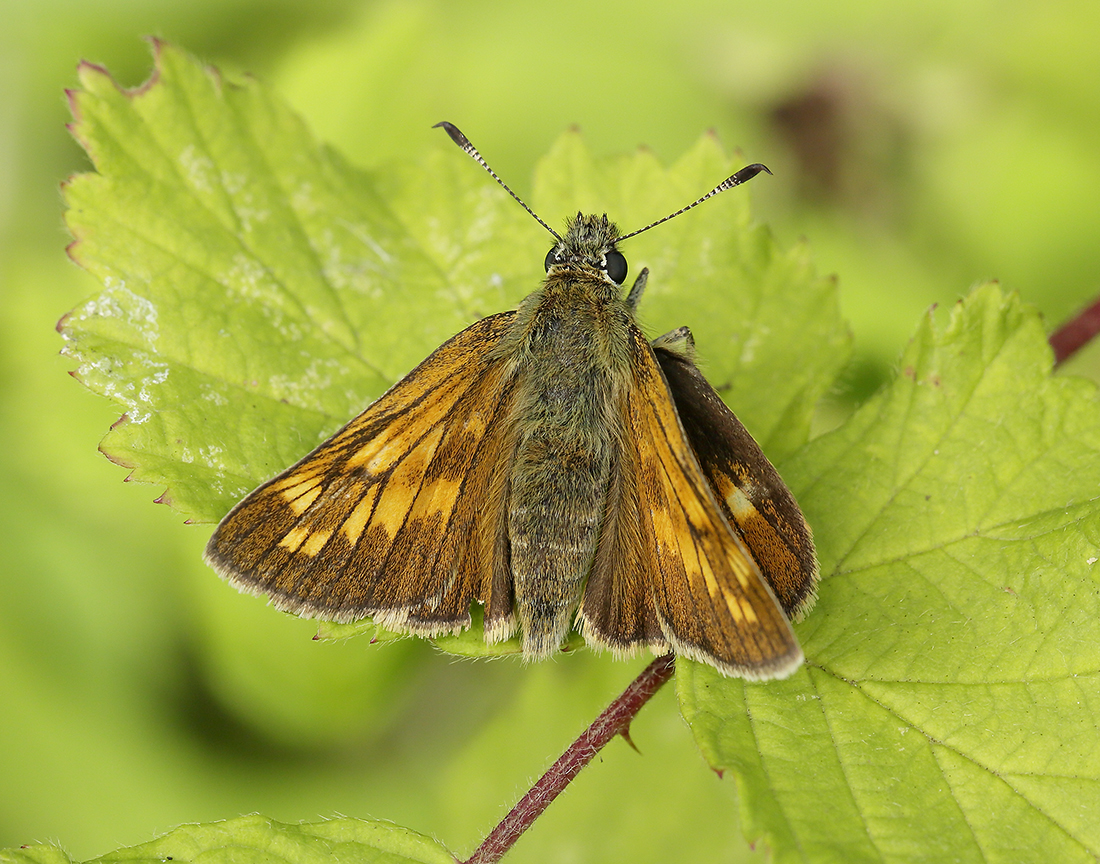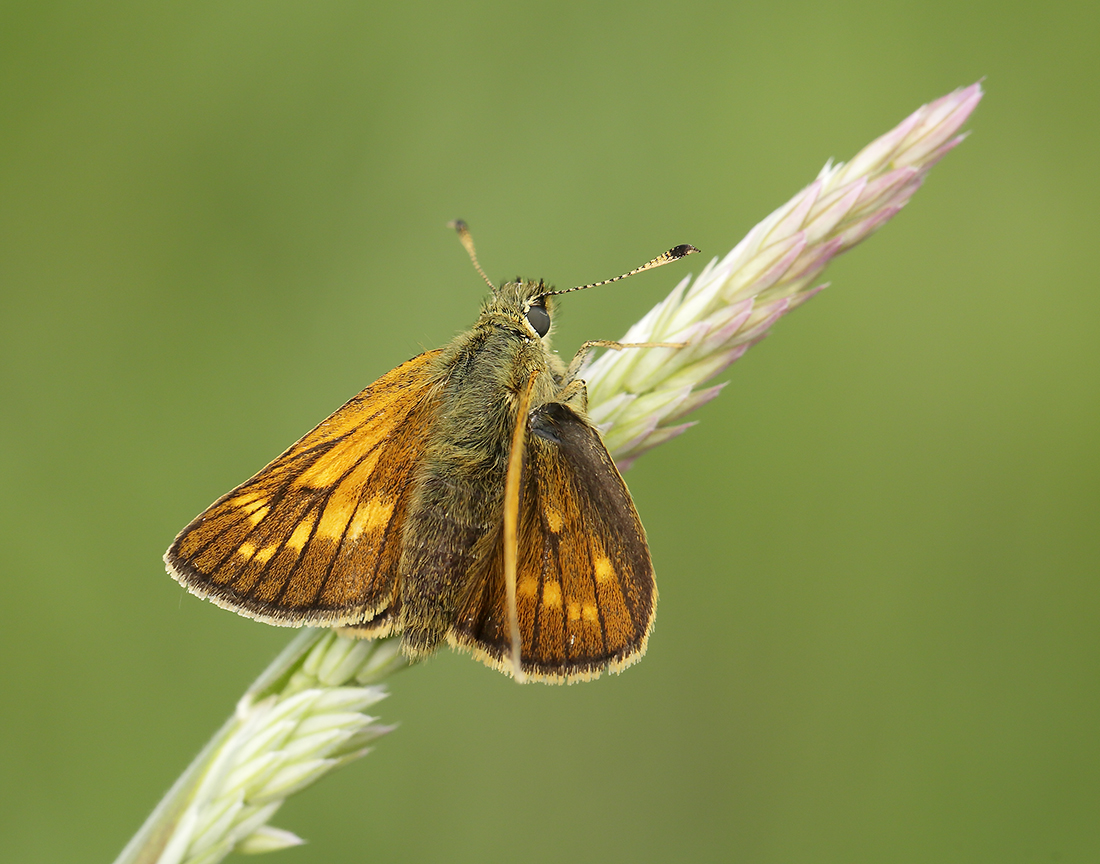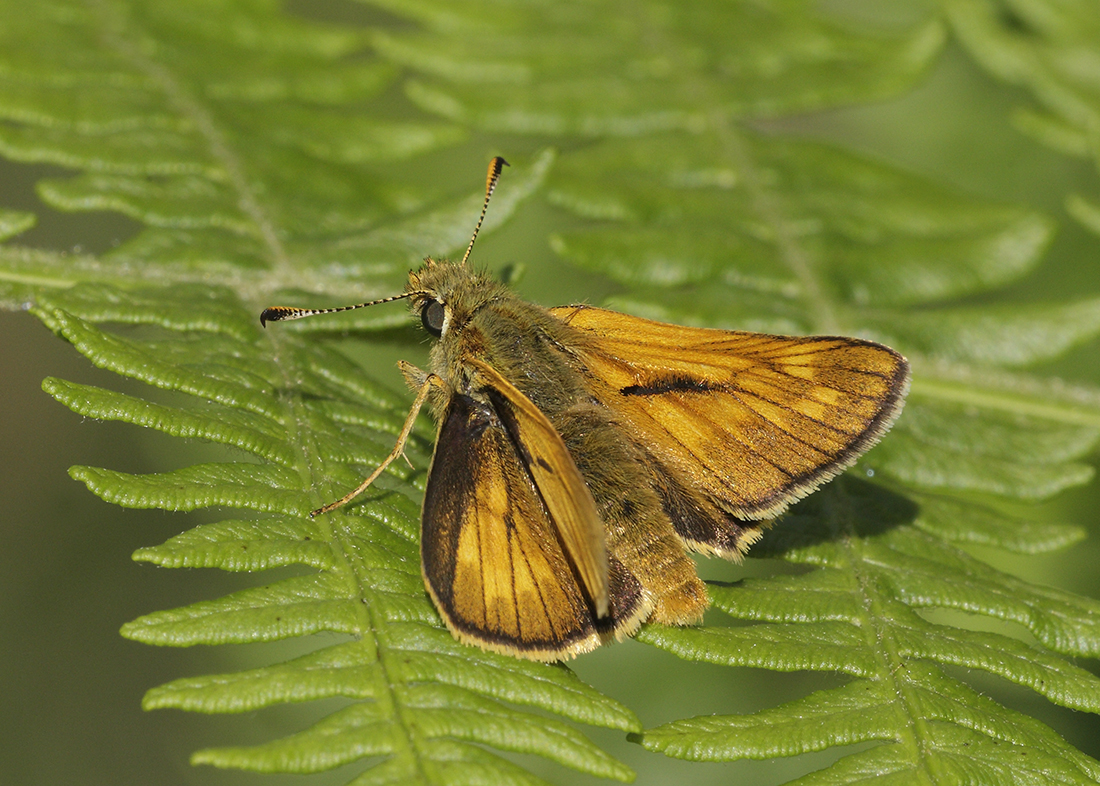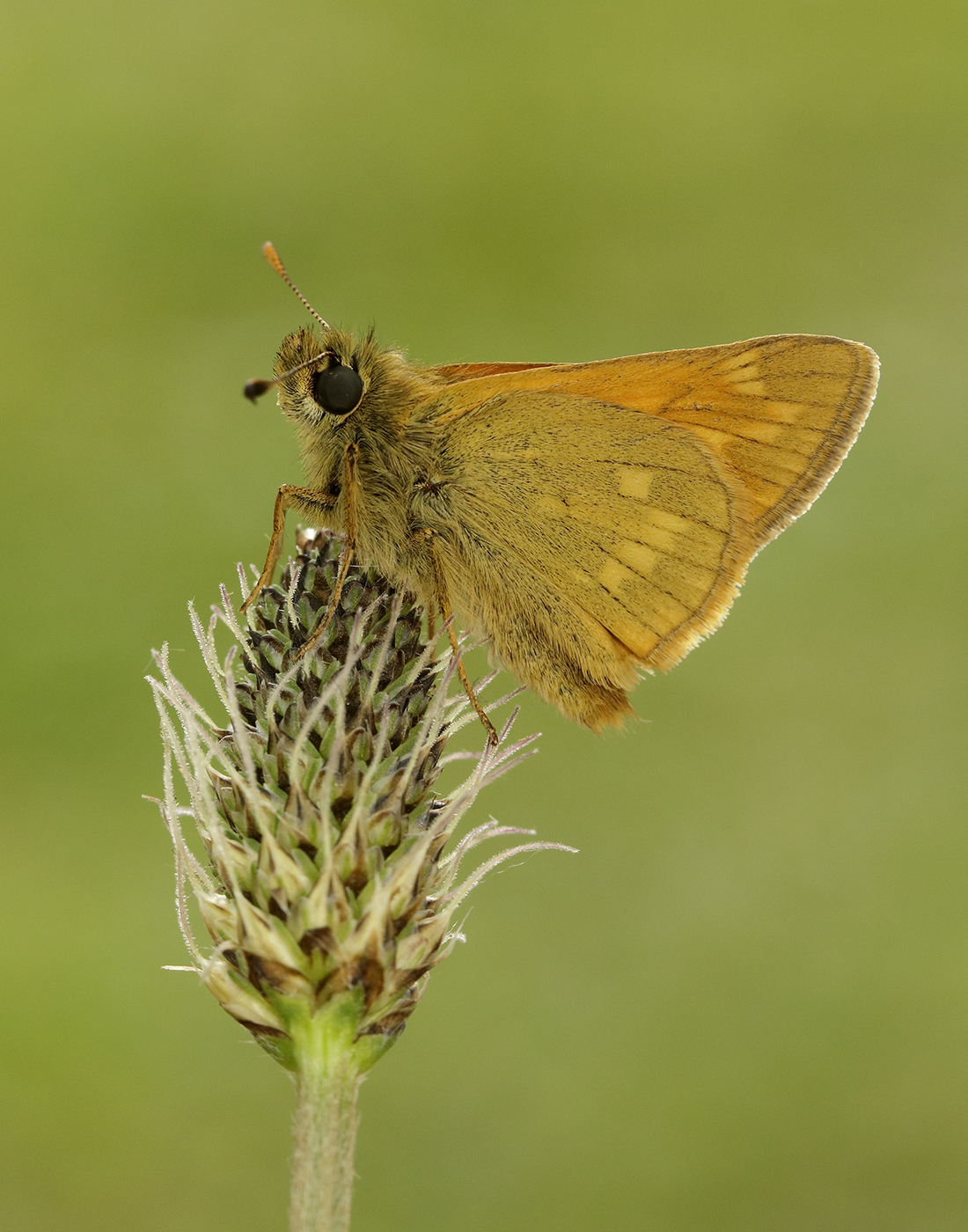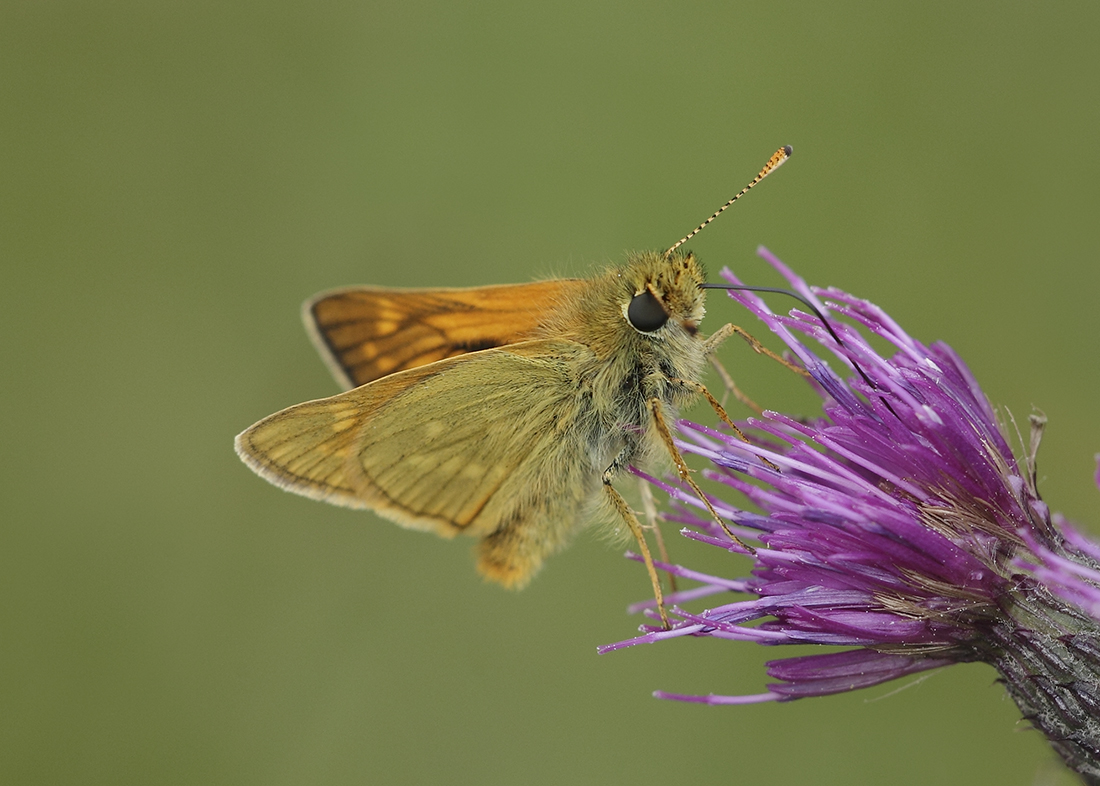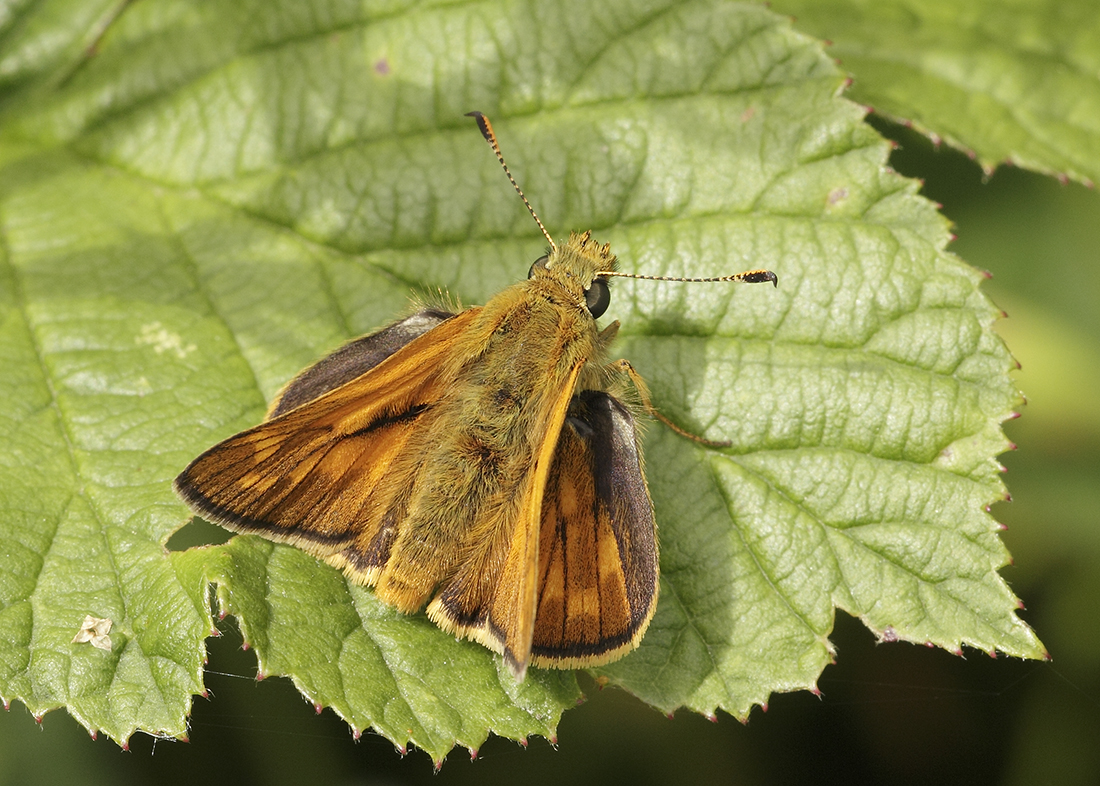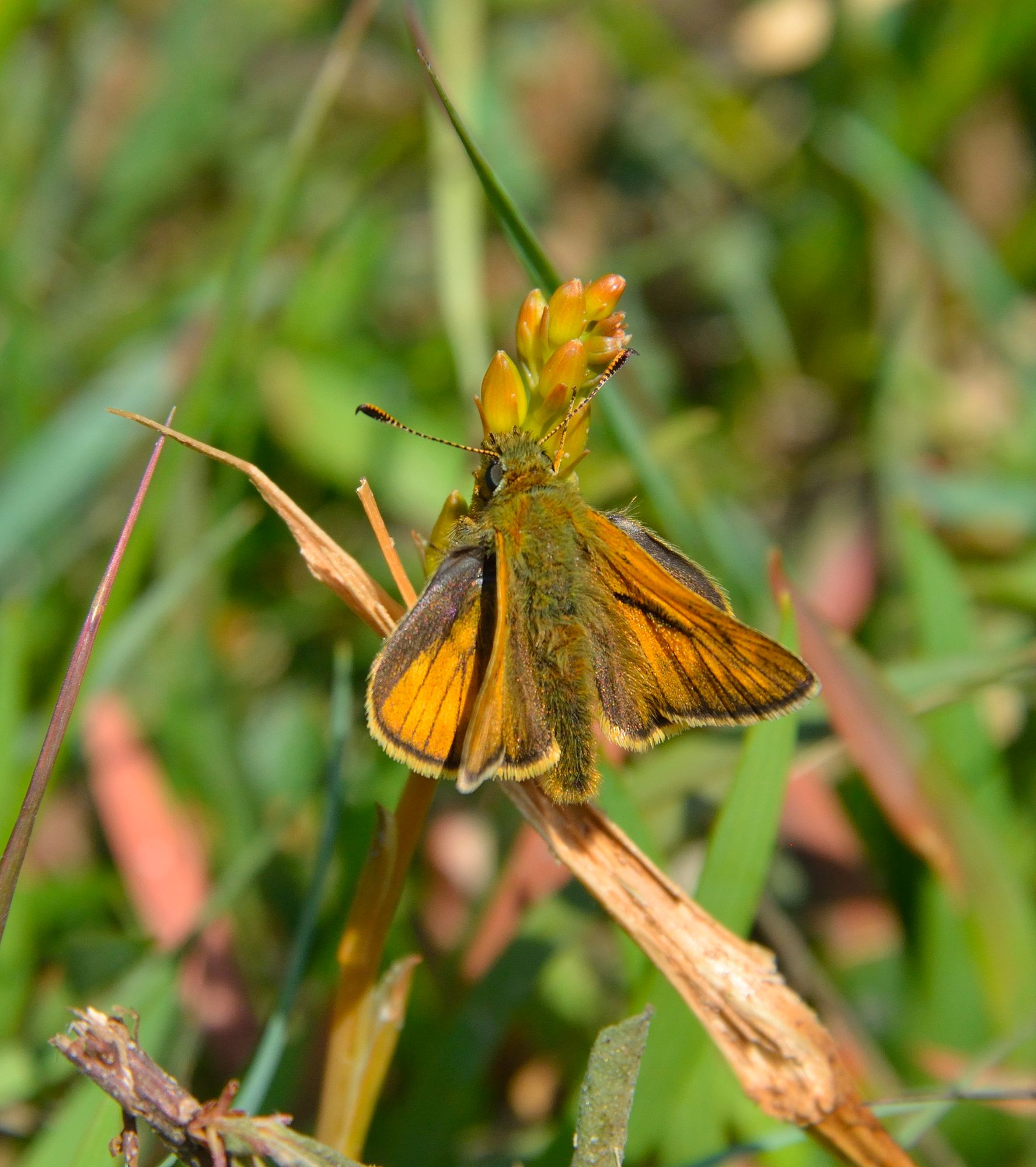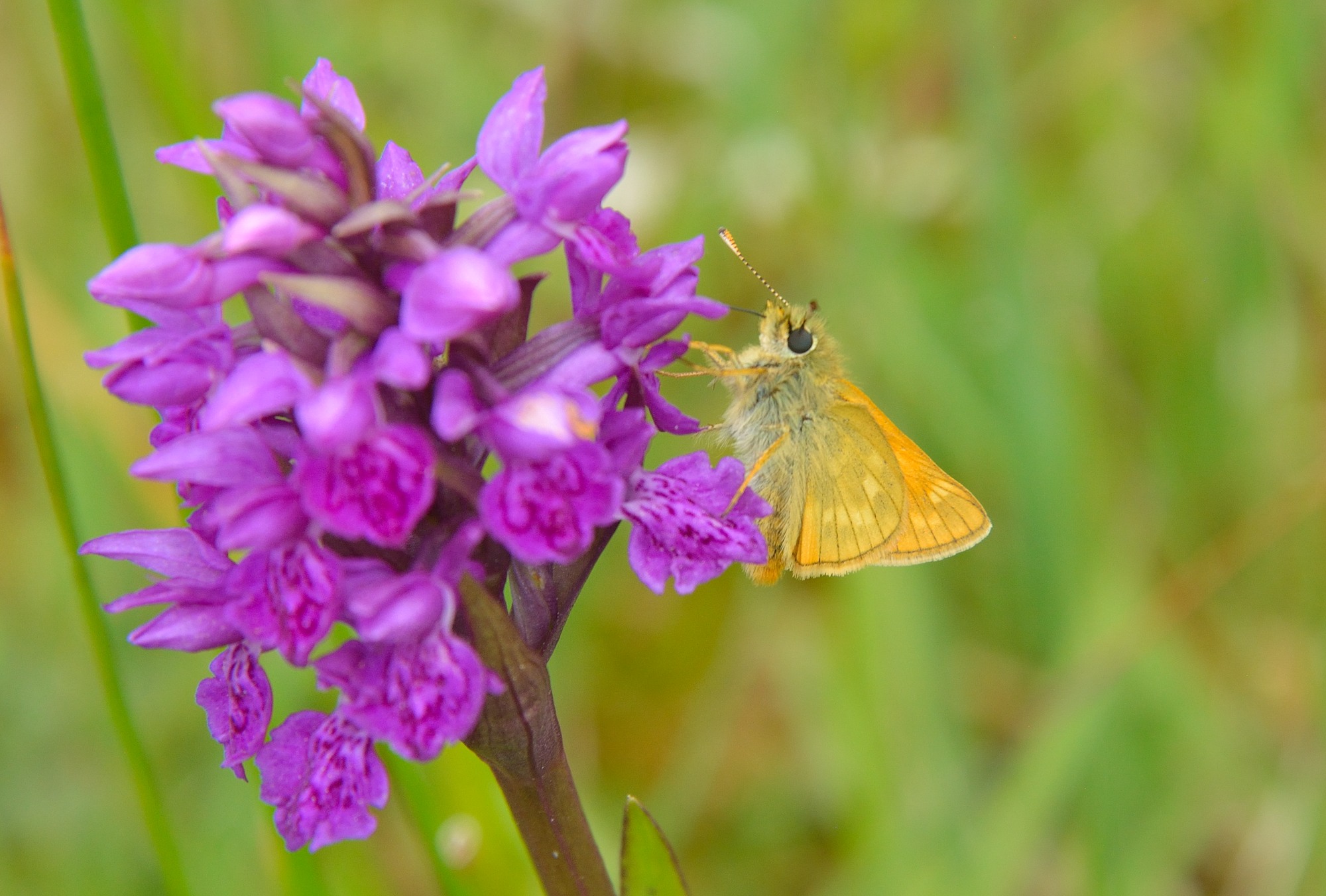The Large Skipper has been present in southern Scotland since at least the early nineteenth century. Today it is well established in habitats close to the coast such as on Caerlaverock WWT, but it also occurs well inland, e.g. Cairnsmore of Fleet and Tarras Valley nature reserves, Glen Trool and Stroan. The wide sunny rides within Mabie Forest are a good place to see the Large Skipper.
Identification
The Large Skipper is only a little larger than the Small Skipper, but gives the impression that it is more thickset. Fresh individuals are a bright golden yellow with mottled wings, clearly seen in the males as they sit conspicuously on their perches waiting for females to fly by. When seen with Small Skippers the patterned wings are the most obvious difference except in very worn individuals. In addition, unlike the Small Skipper, the undersides of Large Skipper’s wings can have a pronounced green tinge, and their antennae end in a pronounced curved, pointed hook.
Life cycle & flight period
One generation a year, the adults peaking between the end of June and mid-July. Overwinters as a caterpillar.
Larval foodplant
Cock’s-foot and other grasses.
Habitats
Open woodlands and tall, damp grassland are favourite habitats where it breeds primarily on the common broad-leaved grass, Cock’s-foot. It can also apparently breed on Purple Moor-grass in wetter, more acidic conditions.
The Large Skipper has a noticeably long proboscis and can thus obtain nectar from plants that have deep flowers such as Red Campion, Ragged-Robin and clovers, but it will also take nectar from plants with more accessible nectar e.g. Common Bird’s-foot-trefoil, Marsh Thistle and buttercups.



